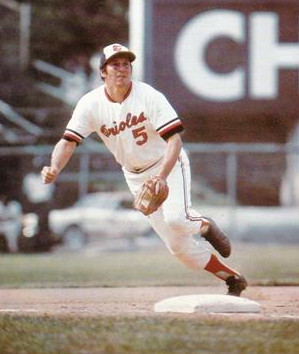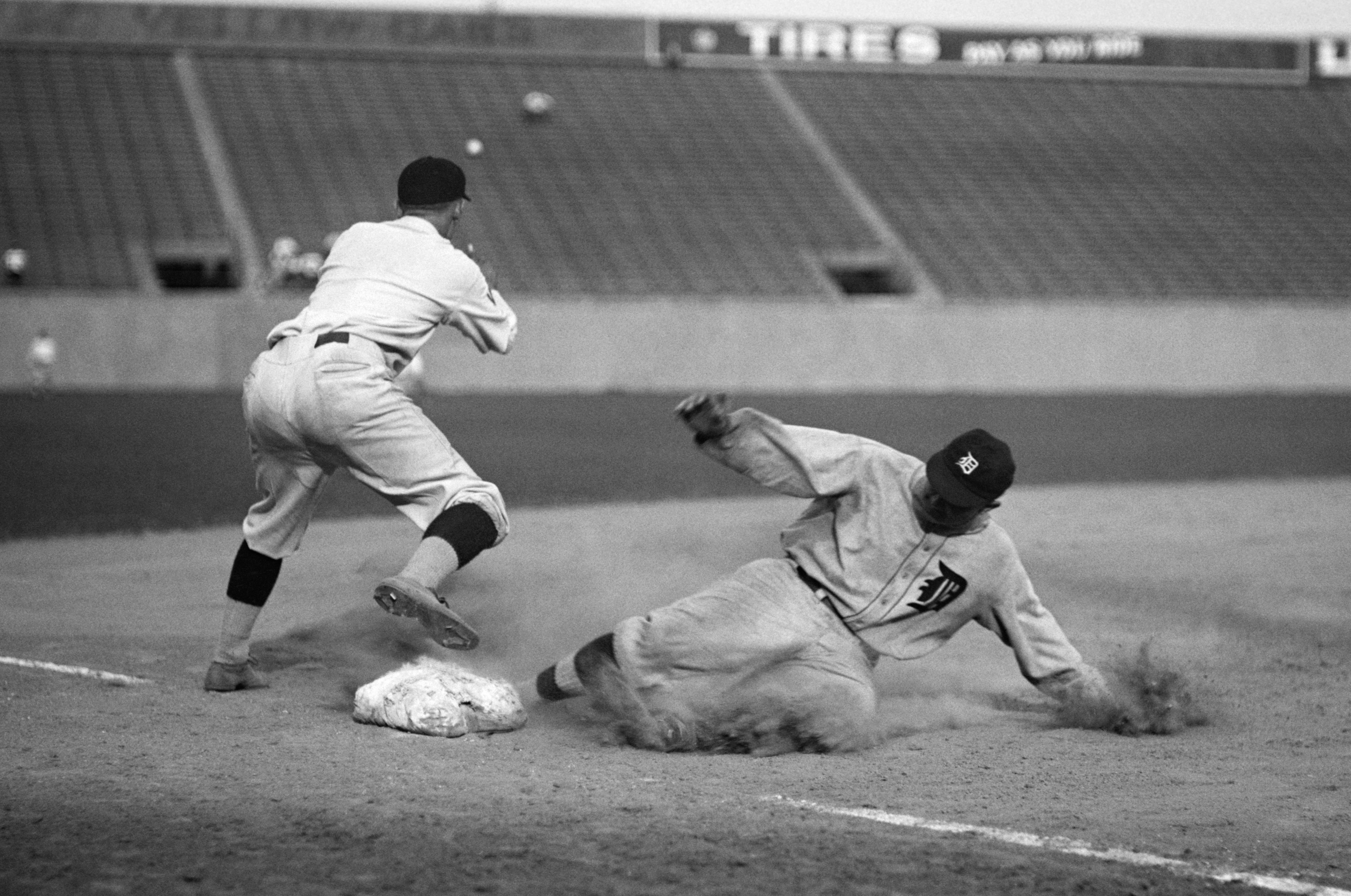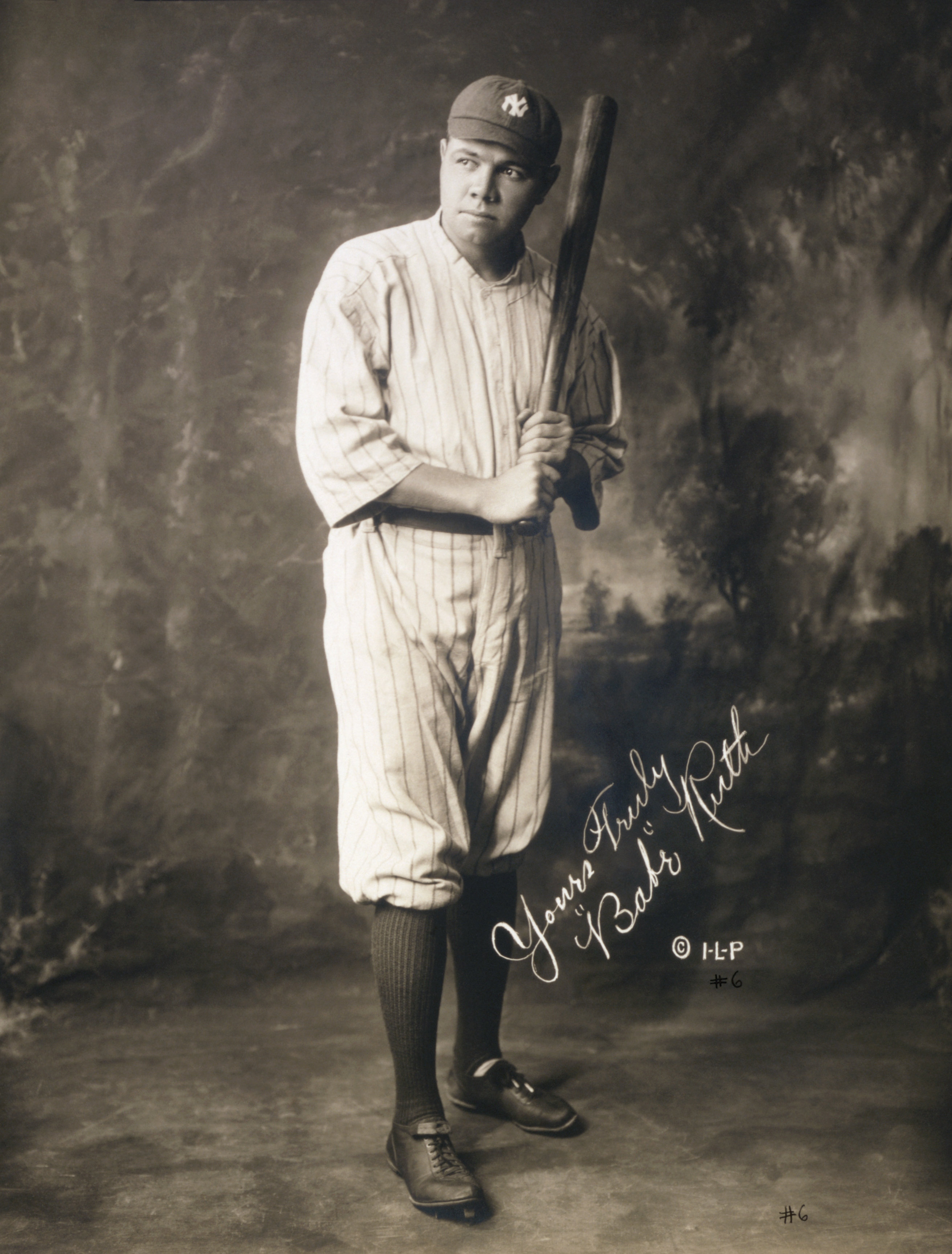|
Bobby Byrne (baseball)
Robert Matthew Byrne (December 31, 1884 – December 31, 1964) was a third baseman in Major League Baseball. From through , he played for the St. Louis Cardinals (1907–1909), Pittsburgh Pirates (1909–1913), Philadelphia Phillies (1913–1917) and Chicago White Sox (1917). Byrne batted and threw right-handed. He was born in St. Louis, Missouri. Baseball The speedy Byrne was a defensive stalwart with excellent range. He started his major league career with the St. Louis Cardinals in the 1907 season. Acquired by the Pittsburgh Pirates in late August 1909, he contributed for his new club down the stretch, including allowing Tommy Leach to stay in center field. Used mainly in the leadoff spot, Byrne made just two errors while hitting .256 with eight stolen bases. Byrne enjoyed his most productive season in , when he posted career-numbers in batting average (.296), RBI (52), runs (101), stolen bases (36), slugging percentage (.417), and led the National League with 178 hi ... [...More Info...] [...Related Items...] OR: [Wikipedia] [Google] [Baidu] |
Third Baseman
A third baseman, abbreviated 3B, is the player in baseball or softball whose responsibility is to defend the area nearest to third base — the third of four bases a baserunner must touch in succession to score a run. In the scoring system used to record defensive plays, the third baseman is assigned the number 5. Third base is known as the "hot corner", because the third baseman is often the infielder who stands closest to the batter—roughly 90–120 feet away, but even closer if a bunt is expected. Most right-handed hitters tend to hit the ball hard in this direction. A third baseman must possess good hand-eye coordination and quick reactions to catch batted balls whose speed can exceed . The third base position requires a strong and accurate arm, as the third baseman often makes long throws to first base or quick ones to second base to start a double play. As with middle infielders, right-handed throwing players are standard at the position because they do not need to ... [...More Info...] [...Related Items...] OR: [Wikipedia] [Google] [Baidu] |
Stolen Base
In baseball, a stolen base occurs when a runner advances to a base to which they are not entitled and the official scorer rules that the advance should be credited to the action of the runner. The umpires determine whether the runner is safe or out at the next base, but the official scorer rules on the question of credit or blame for the advance under Rule 10 (Rules of Scoring) of the MLB's Official Rules. A stolen base most often occurs when a base runner advances to the next base while the pitcher is pitching the ball to home plate. Successful base stealers are not only fast but have good base-running instincts and timing. Background Ned Cuthbert, playing for the Philadelphia Keystones in either 1863 or 1865, was the first player to steal a base in a baseball game, although the term ''stolen base'' was not used until 1870. For a time in the 19th century, stolen bases were credited when a baserunner reached an extra base on a base hit from another player. For example, i ... [...More Info...] [...Related Items...] OR: [Wikipedia] [Google] [Baidu] |
1917 World Series
The 1917 World Series was the championship series in Major League Baseball for the 1917 season. The 14th edition of the World Series, it matched the American League champion Chicago White Sox against the National League champion New York Giants. The White Sox won the Series four games to two. The Series was played against the backdrop of World War I, which dominated the American newspapers that year and next. The strong Chicago White Sox club had finished the 1917 season with a 100–54 record: their only 100-win season in franchise history as of 2021. The Sox's next World Series winner in 2005 would finish the regular season with a 99–63 record. The Sox won Game 1 of the Series in Chicago 2–1 behind a complete game by Eddie Cicotte. Happy Felsch hit a home run in the fourth inning that provided the winning margin. The Sox beat the Giants in Game 2 7–2 behind another complete game effort by Red Faber to take a 2–0 lead in the Series. Back in New York for Game 3, Cicot ... [...More Info...] [...Related Items...] OR: [Wikipedia] [Google] [Baidu] |
Cozy Dolan (1910s Outfielder)
Albert J. "Cozy" Dolan (born James Alberts, December 23, 1882 – December 10, 1958) was a Major League Baseball player. The , 160-pound outfielder and third baseman played for six teams; the Cincinnati Reds (1909), the New York Highlanders (1911–1912), the Philadelphia Phillies (1912–1913), the Pittsburgh Pirates (1913), the St. Louis Cardinals (1914–1915) and the New York Giants (1922). Over his career he posted career numbers of 299 hits, 210 runs, 102 stolen bases, a .339 Slugging percentage, and a .252 batting average. In the final series of the 1924 season, the Giants were playing the Philadelphia Phillies at the Polo Grounds and battling for the pennant with the Brooklyn Dodgers. Giants outfielder Jimmy O'Connell offered Phillies shortstop Heinie Sand $500 to throw the games. Sand rejected the bribe and reported it to Phillies manager Art Fletcher. It eventually led to the lifetime suspension of O'Connell and Dolan, who was a coach for the Giants, by Commission ... [...More Info...] [...Related Items...] OR: [Wikipedia] [Google] [Baidu] |
Howie Camnitz
Samuel Howard Camnitz (August 22, 1881 – March 2, 1960) was a starting pitcher in Major League Baseball for the Pittsburgh Pirates and the Philadelphia Phillies (1913) in the National League and for the Pittsburgh Rebels (1914–15) in the Federal League. A native of Covington, Kentucky, he batted and threw right-handed. In an 11-season career, Camnitz posted a 133–106 record with 915 strikeouts and a 2.75 earned run average in innings pitched. Camnitz was born in Covington, Kentucky, the son of Henry and Elizabeth Camnitz. His father was a printer and his brother Harry Camnitz was also a baseball pitcher. Howie Camnitz received the nickname "Rosebud" due to his bright red hair. He was often referred to as "the Kentucky Rosebud" in his playing career. Camnitz pitched briefly with the Pittsburgh Pirates in 1904 before being sent to the minor leagues to disguise his best pitch, a curveball. He was called up to the Pirates in September 1906. In his first full season in 1907, he ... [...More Info...] [...Related Items...] OR: [Wikipedia] [Google] [Baidu] |
Pitcher
In baseball, the pitcher is the player who throws ("pitches") the Baseball (ball), baseball from the pitcher's mound toward the catcher to begin each play, with the goal of out (baseball), retiring a batter (baseball), batter, who attempts to either make contact with the pitch (baseball), pitched ball or draw a base on balls, walk. In the numbering system used to record defensive plays, the pitcher is assigned the number 1. The pitcher is often considered the most important player on the defensive side of the game, and as such is situated at the right end of the defensive spectrum. There are many different types of pitchers, such as the starting pitcher, relief pitcher, middle reliever, left-handed specialist, lefty specialist, setup man, and the closing pitcher, closer. Traditionally, the pitcher also bats. Starting in 1973 with the American League(and later the National League) and spreading to further leagues throughout the 1980s and 1990s, the hitting duties of the pitcher h ... [...More Info...] [...Related Items...] OR: [Wikipedia] [Google] [Baidu] |
Games Played
Games played (GP) is a statistic used in team sports to indicate the total number of games in which a player has participated (in any capacity); the statistic is generally applied irrespective of whatever portion of the game is contested. Baseball In baseball, the statistic applies to players, who prior to a game, are included on a starting lineup card or are announced as an '' ex ante'' substitute, whether or not they play. For pitchers only, the statistic games pitched is used. A notable example of the application of the above rule is pitcher Larry Yount, who suffered an injury while throwing warmup pitches after being summoned as a reliever in a Major League Baseball (MLB) game on September 15, 1971. He did not face a batter, but was credited with an appearance because he had been announced as a substitute. Yount never appeared in (or actually played in) any other MLB game. Association football In association football Association football, more commonly known as footba ... [...More Info...] [...Related Items...] OR: [Wikipedia] [Google] [Baidu] |
Triple (baseball)
In baseball, a triple is the act of a batter safely reaching third base after hitting the ball, with neither the benefit of a fielder's misplay (see error) nor another runner being put out on a fielder's choice. A triple is sometimes called a "three-bagger" or "three-base hit". For statistical and scorekeeping purposes it is denoted by 3B. Triples have become somewhat rare in Major League Baseball, less common than both the double and the home run. This is because it requires a ball to be hit solidly to a distant part of the field (ordinarily a line drive or fly ball near the foul line closest to right field), or the ball to take an irregular bounce in the outfield, usually against the wall, away from a fielder. It also requires the batter's team to have a good strategic reason for wanting the batter on third base, as a stand-up double is sufficient to put the batter in scoring position and there will often be little strategic advantage to risk being tagged out whils ... [...More Info...] [...Related Items...] OR: [Wikipedia] [Google] [Baidu] |
Double (baseball)
In baseball, a double is the act of a batter striking the pitched ball and safely reaching second base without being called out by the umpire, without the benefit of a fielder's misplay (see error) or another runner being put out on a fielder's choice. A double is a type of hit (the others being the single, triple and home run) and is sometimes called a "two-bagger" or "two-base hit". For statistical and scorekeeping purposes it is denoted by 2B. Description Typically, a double is a well-hit ball into the outfield that finds the "gap" between the center fielder and one of the corner outfielders, bounces off the outfield wall and down into the field of play, or is hit up one of the two foul lines. To hit many doubles, a batter must have decent hitting skill and power; it also helps to run well enough to beat an outfield throw. Doubles typically drive in runs from third base, second base, and even from first base at times. When total bases and slugging percentages ... [...More Info...] [...Related Items...] OR: [Wikipedia] [Google] [Baidu] |
Hit (baseball)
In baseball statistics, a hit (denoted by H), also called a base hit, is credited to a batter when the batter safely reaches or passes first base after hitting the ball into fair territory with neither the benefit of an error nor a fielder's choice. Scoring a hit To achieve a hit, the batter must reach first base before any fielder can either tag him with the ball, throw to another player protecting the base before the batter reaches it, or tag first base while carrying the ball. The hit is scored the moment the batter reaches first base safely; if he is put out while attempting to stretch his hit to a double or triple or home run on the same play, he still gets credit for a hit (according to the last base he reached safely on the play). If a batter reaches first base because of offensive interference by a preceding runner (including if a preceding runner is hit by a batted ball), he is also credited with a hit. Types of hits A hit for one base is called a single, for tw ... [...More Info...] [...Related Items...] OR: [Wikipedia] [Google] [Baidu] |
National League
The National League of Professional Baseball Clubs, known simply as the National League (NL), is the older of two leagues constituting Major League Baseball (MLB) in the United States and Canada, and the world's oldest extant professional team sports league. Founded on February 2, 1876, to replace the National Association of Professional Base Ball Players (NAPBBP) of 1871–1875 (often called simply the "National Association"), the NL is sometimes called the Senior Circuit, in contrast to MLB's other league, the American League, which was founded 25 years later and is called the "Junior Circuit". Both leagues currently have 15 teams. After two years of conflict in a "baseball war" of 1901–1902, the two eight-team leagues agreed in a "peace pact" to recognize each other as "major leagues". As part of this agreement, they drafted rules regarding player contracts, prohibiting "raiding" of rosters, and regulating relationships with minor leagues and lower level clubs. Each leagu ... [...More Info...] [...Related Items...] OR: [Wikipedia] [Google] [Baidu] |
Slugging Percentage
In baseball statistics, slugging percentage (SLG) is a measure of the batting productivity of a hitter. It is calculated as total bases divided by at bats, through the following formula, where ''AB'' is the number of at bats for a given player, and ''1B'', ''2B'', ''3B'', and ''HR'' are the number of singles, doubles, triples, and home runs, respectively: : \mathrm = \frac Unlike batting average, slugging percentage gives more weight to extra-base hits such as doubles and home runs, relative to singles. Plate appearances resulting in walks, hit-by-pitches, catcher's interference, and sacrifice bunts or flies are specifically excluded from this calculation, as such an appearance is not counted as an at bat (these are not factored into batting average either). The name is a misnomer, as the statistic is not a percentage but an average of how many bases a player achieves per at bat. It is a scale of measure whose computed value is a number from 0 to 4. This might not ... [...More Info...] [...Related Items...] OR: [Wikipedia] [Google] [Baidu] |


.jpg)






.png)
